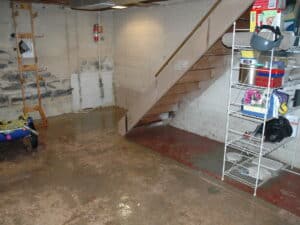Is Moisture in Your Building Costing You? Here’s What To Do
When Should I Moisture Test?
Typically, moisture testing is necessary when there is a potential water intrusion event. In new construction concrete floors will release moisture into the building during the normal concrete curing process. Depending on the type of mixture, some curing times can exceed 30 days! As a precautionary measure, it is prudent to measure the moisture content prior to completing the finishes to eliminate the possibility of impacting other building materials with moisture resulting in mold growth.
Moisture Testing in Concrete & Other Building Materials
It is important to test for excessive moisture in an indoor environment in an effort to minimize the potential for building material damage and the proliferation of microbial growth. Excessive moisture can accumulate from many different water sources in a building, including but not excluded to:
- Faulty fire sprinklers
- Bathrooms, laundry rooms, and other rooms where moisture collects (condensation as a lack of proper ventilation)
- Leaks in water transport mechanisms, such as kitchen pipes and other plumbing
- Other indoor and outdoor sources of humidity and sewer water and water transport
- Faulty vapor barriers on concrete subfloors
During the construction process testing for moisture in concrete slabs, otherwise known as moisture vapor emission testing, makes sense and should be performed on concrete even if flooring conditions appear to be normal. Concrete slabs should be tested regardless of age or grade level, whether it’s on grade, above grade, or below grade. From the penthouse of a building to the basement, the concrete should be tested. Proper moisture testing of the slab will determine the moisture content and potential emissions into a building space. The findings could reveal subfloor conditions that allow you to source the correct type of floor covering that is needed. This will help you avoid future issues such as delamination of VFT or sheets and more importantly, mold growth on carpet padding and carpeting.
Two common methods for testing can provide valuable information and understanding of the slabs moisture condition.
- The American Society of Testing and Methods (ASTM) Standard ASTM F 2170, which is a standard test for measuring the relative humidity in concrete floor slabs using In Situ probes.
- The other test is ASTM F 1869, the standard test method for measuring vapor emission rate of concrete slabs using Anhydrous Calcium Chloride, which measures the vapor emission at the surface.
Omega Environmental Services, Inc. has qualified and certified professionals (Certified Industrial Hygienists, Professional Engineers, Geologists, Certified Asbestos Consultants, Certified Lead Professionals, Toxicologists) that have the expertise to assist businesses in assessing and managing their hazardous materials.
References:
Statement on Building Dampness, Mold and Health. – California Department of Public Health (CDPH)
Moisture Control Guidance for Building Design, Construction and Maintenance – EPA
American Society of Testing Materials
Standard and Reference Guide for Professional Water Damage Restoration – Institute of Inspection Cleaning and Restoration Certification
Contact us for more about our mold inspection and testing service










